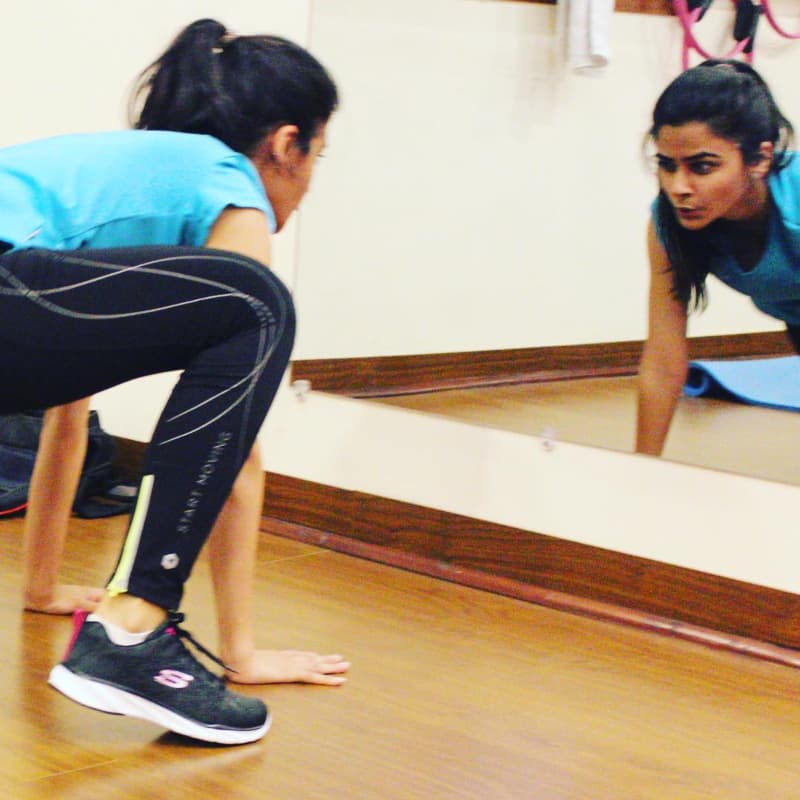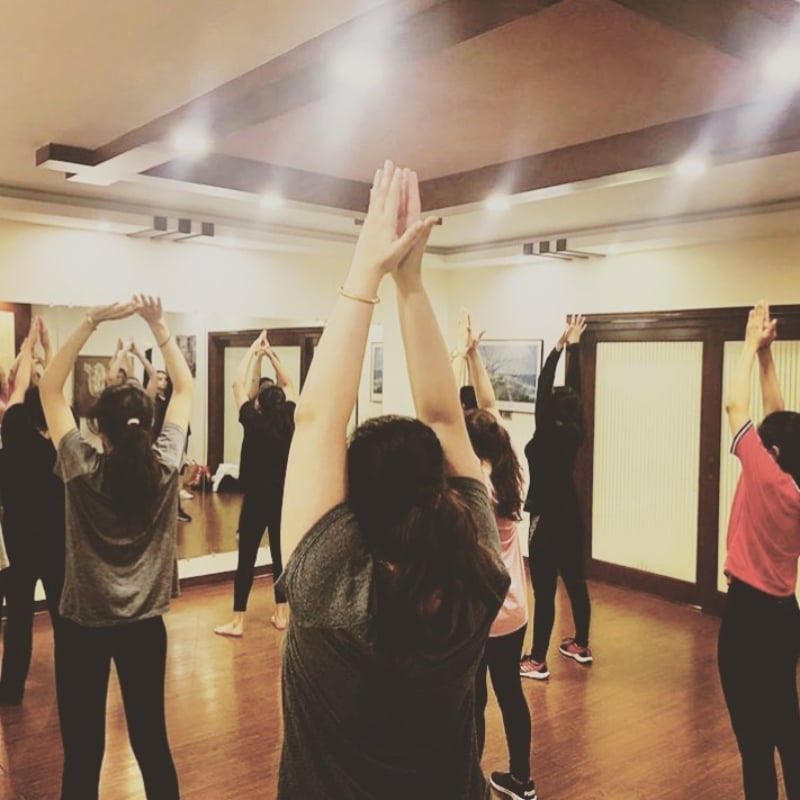You absolutely must include stretches in your workouts. Here's why

There are two types of people in this world: those who warm-up and stretch during their workouts and those who don't.
As a trainer, I often see the latter. This usually happens when clients rush late into class and jump straight into the exercise. Some even skip the cool down and leave early.
While it may seem that skipping stretching makes up for lost time, in reality it affects your workout for the worse.
Be it studio classes or the gym, it is essential to take your body through the motions before diving into the workout - even if you've missed the warm up in class - as it mentally and physically prepares your body for activity.

Preferably, one should dedicate a minimum of 10 minutes to warm-ups and stretching. Stretching 'cold' muscles can cause injury which is why a warm-up prior is necessary.
Also read: I tried 6 local Instagram activewear brands so you don't have to
Start with a 5-10 min warm-up at an easy pace to raise the body temperature. This will cause an increase in blood flow to the muscles. dilatation of the blood vessels, help the muscles work more efficiently, decrease chances of muscle cramping and reduce risk of injury during stretching.
Once you feel heat buildup in the body and the heart rate begin to rise, proceed to stretching.
Why is stretching beneficial before and after your workout?
Stretching prior to exercise for at least 5-10 minutes aids in muscle flexibility, improves range of motion, betters your posture and increases muscle coordination. It’s not meant to be rushed, in fact, holding stretches for 10-30 seconds helps lengthen the muscle(s).
Our predominantly sedentary lifestyles, force our muscles to stiffen, lose their elasticity and become short and tight, especially from long hours of sitting and maintaining certain postures.
Stretching, in general, helps reduce risk of joint pain, strains and muscle damage. It also makes us more aware of our body. You start to notice the dominant and/or more flexible side and by doing stretches regularly it's possible to even it out.

Post workout stretching paired with a warm down of at least 10 minutes helps reduce muscle fatigue and soreness by lowering levels of lactic acid produced during exercise. It lowers the heart rate at a steady pace and slowly brings the body back to its normal state making it feel more relaxed and rested.
Additionally, it gives you a sense of mental clarity and a mind-body connection.

Note: There should be a slight tension during stretching, but not pain/discomfort – if there is pain, it’s best to consult a physiotherapist or ask your trainer for modifications.
There are many different types of stretches depending on one’s goal but the most common ones are static and dynamic.
Static stretches are ones in which a position is held, stretching a muscle to its farthest point – isolating one muscle group at a time. For example, bending your knee and holding onto your foot from behind to stretch the quads. Static stretches are best incorporated in the cool down, however, some people prefer starting their workout with these slow and relaxed stretches.
These three static stretches during the cool down help release muscle tension post-workout. Hold each pose for at least 10 seconds, if not more.
Seated forward stretch (hamstrings):

Sit on the mat, back upright, both legs stretched straight in front of you. You can bend your knees if your hamstrings feel tight or if there's an uncomfortable sensation under your knees.
Lift your arms so they're parallel to the mat, then push forward from the waist. Try to reach your fingers beyond your toes maintaining a straight back. Hold. Sit back up and repeat.
Figure 4 (glutes):

Lie on the mat, legs in tabletop, externally rotate one leg and place the ankle on the upper thigh of the other leg - like sitting with one leg resting on the other. Put your hands behind your thigh in tabletop and gentle pull it towards you. Hold, switch and repeat.
Spinal twist (back and abs):

Lie on the mat, place your legs in tabletop keep them glued together. Drop the legs to one side with feet stacked and twist the torso to the opposite side. The higher your legs, the deeper the stretch. Hold, switch and repeat.
Dynamic stretches involve repetitive movement in which joints and muscles go through a full range of motion. For example, arm circles or leg swings. The movements start slow and gradually increase in pace and range. These are sport-specific movements and get the body pumped for the workout.
Make sure not to work your muscles to the point of fatigue otherwise the exercise will suffer. Ideally, for the warm up and down, light dynamic stretches should be followed by static stretches.
These three dynamic stretches are a great way to warm up and get the body moving
Go slow, with control.
Side lunges (inner thighs, quads, glutes and hamstrings):

Stand wider than hip width, as wide as is comfortable and lower your body to one side, flexing that knee and extending the other. The idea is to almost sit on one leg. Switch to the other side. Alternate and repeat.
High knees with a side twist (abs, back and quads):

Place the hands on the nape of your neck, lift one knee up. Twist from the waist and bring the opposite elbow and opposite knee as close together as possible - like a standing side crunch. Drop the knee, bring the elbow back up and switch to the other side. Alternate and repeat.
Prisoner squats (glutes, quads and hamstrings):

Stand with your legs a little wider than hip width, angle the feet at 45 degrees. Place your hands on the nape of your neck and go down into a squat (pushing your butt to the back - like sitting on a chair - with a straight back). Come back to standing and repeat.
There is another type of stretch that you will normally see the older generation doing called Ballistic stretching, which is momentum-based. For example, swinging up and down from the waist trying to reach the toes. This attempts to force the body out of its normal range of motion and is best avoided because the jerky and bouncy movements do not allow the muscles to relax and stretch, instead uses them as springs posing a higher risk of injury.
Whether your workout involves static or dynamic stretches, it’s always favourable to tune in to your body’s needs and see what suits you. Every body is different and what may work for someone else, may not necessarily work for you and vice versa.
Stretching should not only be a part of exercise routines, it should be encouraged otherwise too. Incorporate stretching into your daily life, whether it's right after waking up, or during lunch break at work, or before heading to bed. Our bodies are meant for movement and, among other numerous benefits, stretching provides relief and comfort to muscles.